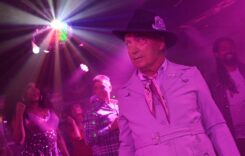NOVEMBER 7, 2016
It’s a Marvel movie. That’s really all you need to know about “Doctor Strange.”
If you’re judging the quality of a Marvel movie, you have to evaluate it by the positive strengths in Acts 1 & 2. With the possible exception of “Guardians of the Galaxy,” Act 3 of Marvel movies are usually a CGI borefest with computer-generated images fighting with one another to zero emotional effect.
Luckily with “Doctor Strange,” Acts 1 & 2 are pretty good. The occasionally witty screenplay by Jon Spaihts, Scott Derrickson, and C. Robert Cargill kicks in with several laugh-out-loud lines in a way that was not true for several even more popular Marvel movies. Plus when you have a good screenplay with Academy Award winner Tilda Swinton and Oscar nominees Benedict Cumberbatch, Chewitel Ejiofor, and Rachel McAdams, you can make the most obscurely scientific gobbledygook actually make sense when coming out of their mouths.
Cumberbatch’s Dr. Stephen Strange is pretty much in his “Sherlock” wheelhouse, arrogant but with a possibility of redemption. (And a good American accent.) So that when he gets into an accident that damages his hands, which are his moneymakers, he doesn’t have many people to whom to turn. Learning of another accident victim (Benjamin Bratt) who had essentially healed himself, Dr. Strange heads out to meet with that victim’s guru The Ancient One (Tilda Swinton) in Katmandu. (There’s some controversy here in casting a English woman as an Asian man, but no worries, Swinton pulls it off.)
Cumberbatch and Swinton have that special chemistry that really good actors have with each other, and their scenes with one another are an absolute delight. Even when we get into CGI nonsense in Act 3, that chemistry carries over.
Honestly, there’s not a lot more about “Doctor Strange” to talk about. It’s perfectly fine to talk about while you’re leaving the theater (and there’s much to like here), but you’re likely to forget about most of it by the time you’re home.
GRADE: B-












